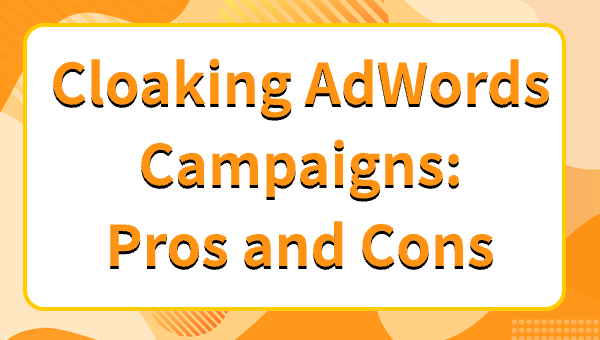Cloaking AdWords Campaigns: Pros and Cons
Introduction: Balancing Performance and Compliance
Cloaking has long been a controversial tactic in online marketing, particularly when it comes to AdWords campaigns. On one hand, it can help advertisers pass strict policy reviews and protect their best-performing landing pages. On the other, if misapplied, it may break Google’s rules and result in bans or wasted ad budgets. Understanding the true pros and cons of cloaking for AdWords is critical for any serious marketer looking to maximize results while minimizing risks.
How Cloaking Works in AdWords Campaigns
In simple terms, cloaking for AdWords uses advanced filtering to show policy-compliant content to Google reviewers and separate content to real human visitors. Typically, this includes IP detection, user-agent filtering, and behavior-based checks to identify crawlers or reviewers. Once these are identified, a “safe” page is shown to Google, while high-converting promotional offers are presented to the real audience. This mechanism allows advertisers to protect sensitive or aggressive funnels from competitors or platform audits.
Advantages of Cloaking AdWords Campaigns
Cloaking, if handled responsibly, brings several strategic advantages. First, it prevents your campaigns from being easily copied by competitors since the real landing pages stay hidden. Second, it helps get campaigns through rigorous AdWords approvals by showing a squeaky-clean version to reviewers. Finally, cloaking allows aggressive testing of offers and creatives that might otherwise be disapproved, giving marketers an edge in highly competitive niches.
Risks and Potential Downsides
However, cloaking is never risk-free. If configured incorrectly or pushed too far, it could trip Google’s fraud detection, leading to immediate account bans. Overly aggressive cloaking might also accidentally hide valuable user data or break the user journey, harming conversion rates. In some cases, advertisers might face legal or ethical issues if cloaking is used to deliver misleading or fraudulent offers.
Best Practices for Responsible Cloaking
To use cloaking ethically, marketers should ensure their “safe page” meets genuine policy requirements. Partnering with a professional cloaking technology provider is essential, along with regular updates to detection patterns and continuous quality monitoring. Cloaking should support — not replace — authentic, high-quality advertising efforts.
Conclusion
Cloaking AdWords campaigns can unlock performance and protect strategies, but it demands precision and responsibility. If you wish to safeguard your affiliate links, improve ad performance, and stay competitive, visit adcloaking.com to explore advanced cloaking solutions.

